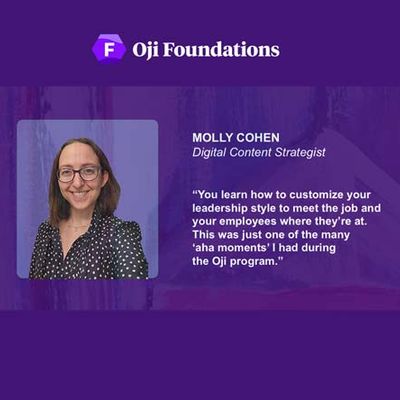Using Emotional Intelligence to Boost Team Performance

Emotional intelligence is a popular topic for managers and leaders in business, but many don’t really know what EI is or how to put it to work. Emotional intelligence is a set of skills that can be used to help us recognize our emotions and then regulate them in the service of our goals. For example, when we are about to lead a team meeting and we notice we are still irritated from an earlier conversation, emotional intelligence helps us to shift to a more pleasant mood so that we can make the meeting a success.
While EI is an essential skill for all workers, it’s particularly critical for managers. Simply put, great managers have high EI. For example, a study we completed in 2017 at the Yale Center for Emotional Intelligence showed that, amongst a group of employees whose supervisors’ EI was low, 70% of the primary emotions they experienced were negative.
When people think of emotional intelligence, the concept is often associated with managing tough conversations, difficult relationships, and challenging organizational situations. But EI tools have a much broader application. Emotions can be harnessed in virtually every situation to improve performance, enhance relationships, and bolster mental health.
As a leader, you can build emotionally intelligent habits to help your team excel and lower their stress. At Oji Life Lab, where we’re co-founders, we’ve developed business-focused training programs that engage managers in a series of activities that help them acquire these habits at their own pace. While that’s beyond the scope of this brief article, you can certainly start applying these concepts today with some diligence and creativity.
Emotions affect performance and relationships
What we know from decades of research is that emotions matter all day, every day. Emotions predict how well we will perform, how fulfilled we will feel, and how successful we will be at forging and maintaining productive relationships. As managers, our attention to our own emotions can help us create the kind of environment people want to work in – one with psychological safety and opportunities for creativity and personal growth. We can develop a group culture where everyone fulfills their potential.
As more organizations move to a hybrid work model where office layouts and lunch options have lost their relevance, a simple truth comes into focus: what matters in the workplace is people. Regardless of what factors lead to a professional’s promotion to a management role, it’s critical that they gain the skills to understand and manage people. We all know the stories of standout performers – engineers, business analysts, physicians, etc. – that fail in leadership positions because of a lack of emotional intelligence. For instance, an engineer might be promoted to management for their superior technical abilities, even if they fall short on people skills.
As we covered in our post Emotional Intelligence: Why Managers Need It Now, it’s essential for leaders to understand and practice emotion co-regulation when managing a team or interacting with colleagues. Co-regulation is the ability to express and regulate your emotions in a way that supports other people as they recognize and regulate their own emotions. When you’re enthusiastic, calm, focused or excited, your emotions are contagious and can support your team. Likewise, feelings like anger, frustration and anxiety can infect your team and undermine performance. Helping your team harness their emotions to achieve desired outcomes is key to your success as a manager.
Can we pick the feelings we experience?
Throughout our waking hours, feelings arise spontaneously, outside of our control. That said, what we do with them – or as a consequence of them – will have ripple effects in our work (and personal) relationships, in overall group culture and, critically, in our performance and the performance of the people we manage. The skillful use of EI techniques can establish managers as positive role models for their team as they negotiate every day with presence, equanimity, and well-being, building a positive, affirming culture for all.
Importantly, there is no such thing as a bad or good emotion, though some emotions are more helpful than others for a specific situation or set of goals. As we’ll explore later, research shows how we can “regulate” to choose an appropriate emotion for a given situation. The first step in becoming emotionally intelligent is learning to identify your current emotion. The Mood Meter can be a big help with that task.
Meet the Mood Meter
The Mood Meter will help you recognize your emotions – as well as others’ – by building your emotional vocabulary. The Mood Meter organizes emotions in two dimensions: pleasantness and energy.
On the Mood Meter (see below), the horizontal (left to right) axis represents how pleasant or unpleasant we feel. At the far left are emotions that are very unpleasant, in the middle you’ll find neutral emotions, and at the far right we find the most pleasant emotions we’ve ever felt.
The vertical (up and down) axis reflects emotional energy: the amount of physical energy running through your body. At the top of the Mood Meter, you’ll see the emotions with the highest energy level while low energy emotions are listed at the bottom.
To make it easy to navigate the Mood Meter, we divide it into four quadrants, each with a color.
The red quadrant contains unpleasant, high-energy emotions like anxiety, rage, frustration, anger, and fear.
The blue quadrant includes feelings that are low energy and low pleasantness like disappointment, sadness, discouragement, hopelessness, and loneliness.
The green quadrant includes emotions that are pleasant but lower in energy such as calm, relaxation, serenity, contentment, and balance.
The yellow quadrant captures pleasant, high-energy feelings like joy, excitement, enthusiasm, elation, and empowerment.
But remember, there is no good or bad quadrant or emotion.
Now that we’ve mapped out the Mood Meter, we can explore how we can use it to regulate our emotions. As we said, emotions just happen – we can’t choose them ahead of time. We can, however, use specific techniques to shift whatever emotion arises to a quadrant that is more conducive to the task at hand. As a manager, you can apply these concepts to your own emotions as well as your team’s. When you help your team shift their emotions, we call it co-regulation.
At a high level, the emotions in each quadrant tend to be supportive in a specific set of circumstances. Yellow and green quadrant emotions are helpful when working solo and in group settings, while blue and red emotions – because they entail unpleasant emotions – are mostly helpful when working solo. While strategies to regulate into the yellow and green quadrants are very useful, we more commonly look for regulation strategies to get out of the red and blue quadrants, because of their unpleasantness.
This chart reveals activities that are a good match for each quadrant and lists regulation strategies you can try to help you shift to that quadrant.

As you learn your way around the Mood Meter, you’ll gain the fluency you’ll need to allow you to recognize and regulate emotions, both for yourself and for your team. With practice, this process can become a habit that you apply in real-time to help you and your team thrive. In time, you may find that you can’t imagine how you managed to manage without the skills of emotional intelligence. Looking for additional emotional intelligence resources for your leaders and managers? Talk with an EI specialist today.
Latest Posts
BACK TO HOME ❯Sign up for our People-Powered Newsletter.

 Meet our Program Experts
Meet our Program Experts
 Why Oji is Different
Why Oji is Different
 First Impressions of the Oji Foundations Program
First Impressions of the Oji Foundations Program